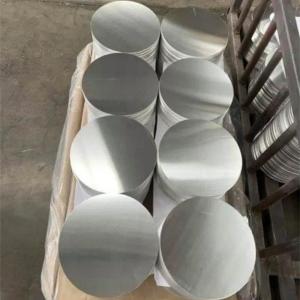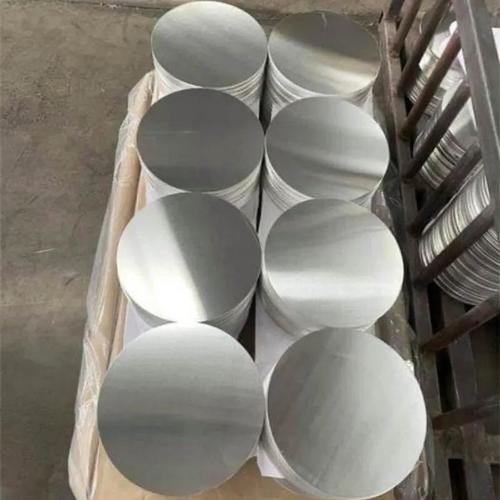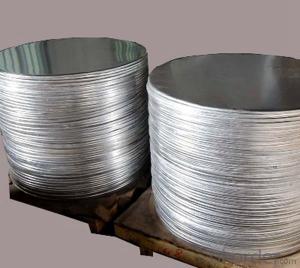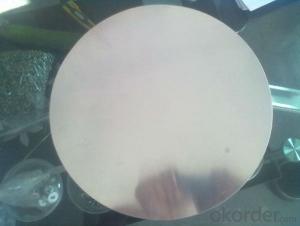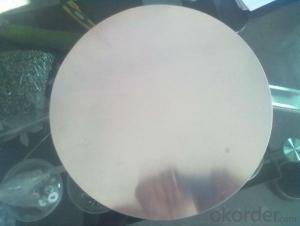Thickness 2mm-6mm 1050 1060 H12 H14 Aluminum Circles/Discs for Cookware Production
- Loading Port:
- Qingdao
- Payment Terms:
- TT OR LC
- Min Order Qty:
- 1 T
- Supply Capability:
- 2000 T/month
OKorder Service Pledge
OKorder Financial Service
You Might Also Like
Specification
Product Description
Aluminum circles are circular aluminum products processed from aluminum sheets or coils through stamping and shearing processes. As a semi-finished product, aluminum circles are widely used across various industries due to their excellent physical and chemical properties. In addition to cookware manufacturing, aluminum circles are extensively applied in electronics, chemicals, communications, construction, decoration, and packaging industries.
MC Aluminum specializes in the production of 1050 / 1060 aluminum circles tailored for the cookware industry. These high-quality aluminum circles are widely used in the production of pots, bowls, ladles, and pans, gaining trust from domestic and international customers for their outstanding performance and reliable quality.
Specifications:
Grade | 1000 3000 5000 6000 8000 Series |
Temper | O, H12, H16, H18, H22, H24, H26, T3-T8 |
Shape | Flat round |
Thickness | 2-6mm |
Width | 500-2800mm |
Tolerance | ±1% |
Surface treatment | coating |
Country of origin | Zhengzhou |
| Processing Services | Bending, uncoiling, welding, punching, cutting |
MOQ | 1-3 tons |
Product Advantages
1.High Corrosion Resistance: Aluminum naturally possesses excellent corrosion resistance, making it less susceptible to moisture or acidic and alkaline components in food, thereby extending cookware lifespan.
Good Formability: Aluminum circles are easy to process and can be precisely shaped through die casting and stamping to meet various cookware design requirements.
2.Excellent Thermal Conductivity: 1060 aluminum alloy has high thermal conductivity, ensuring even heat distribution, preventing food from burning due to overheating.
3.Lightweight: Aluminum is inherently lightweight, making cookware durable and easy to handle.
4.Environmental protection: Aluminum is a recyclable material that meets modern environmental standards, enhancing the market competitiveness of products made from it.
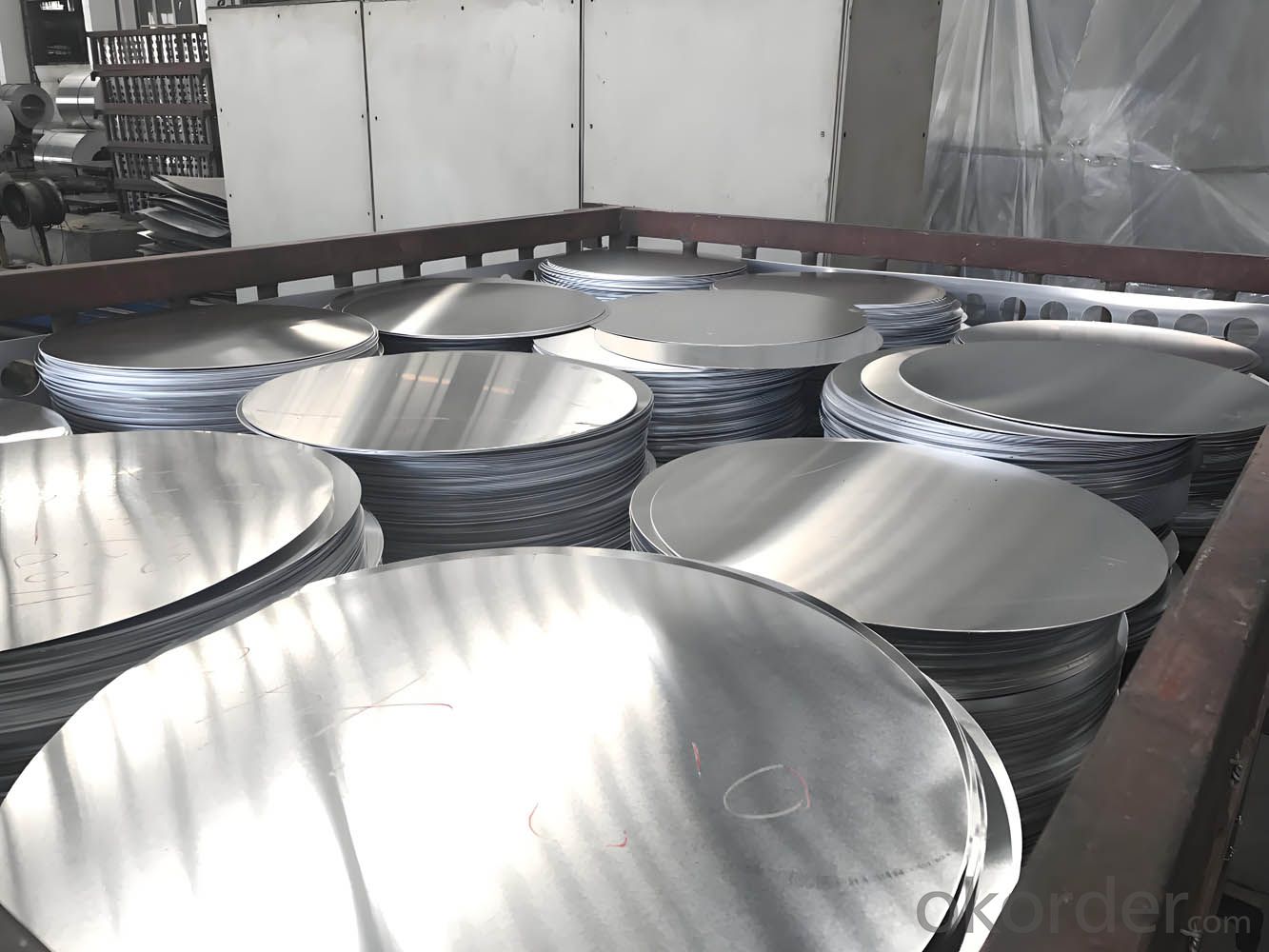
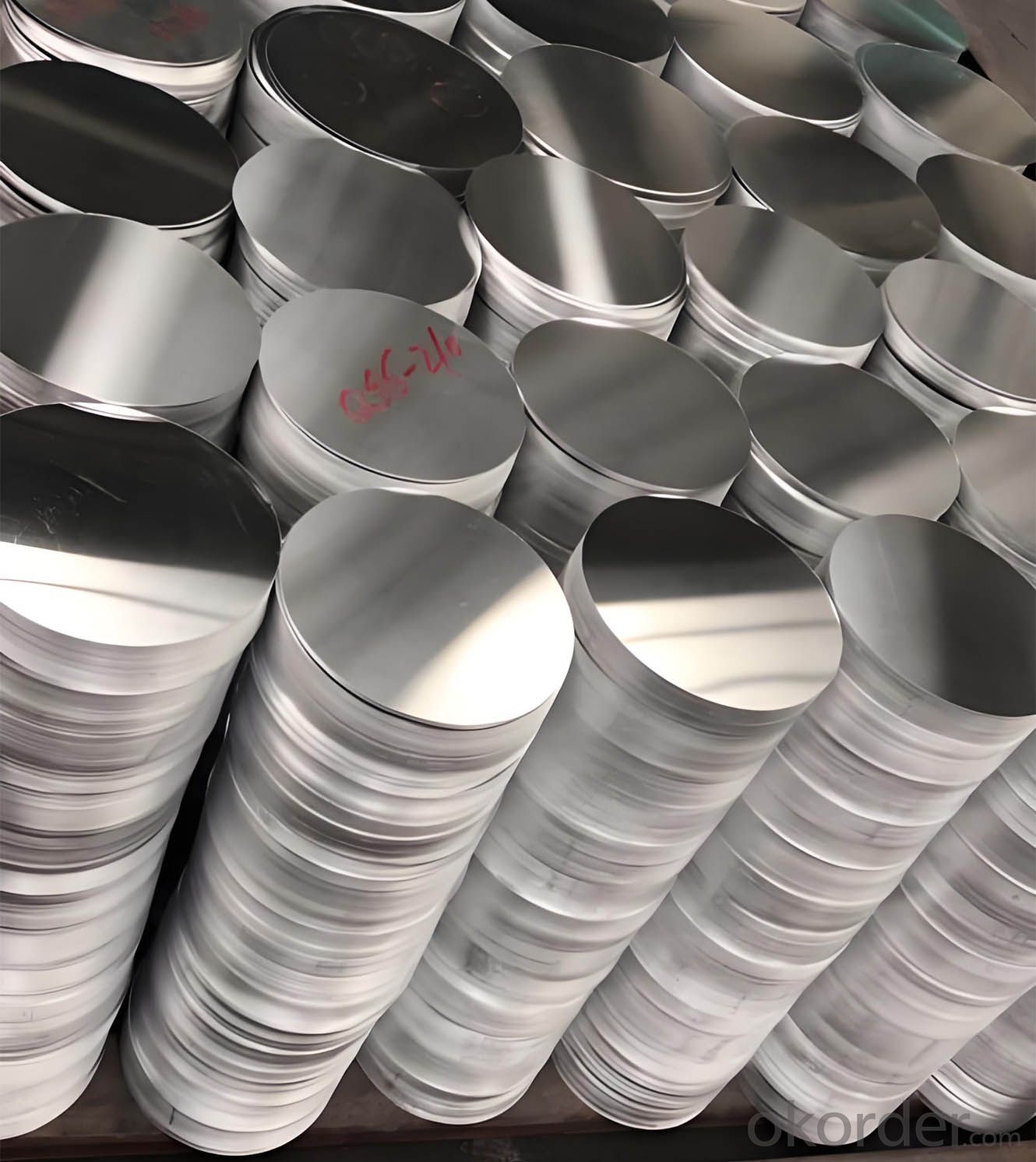
About MC Aluminum
Founded in 2005, MC Aluminum is a modern aluminum processing enterprise integrating R&D, production, and sales. The company boasts advanced production equipment and a comprehensive quality management system. Our products are exported to Europe, the United States, Southeast Asia, and other regions. We are committed to a customer-centric approach, ensuring quality and reliability while continuously striving for innovation and excellence in service.
Application
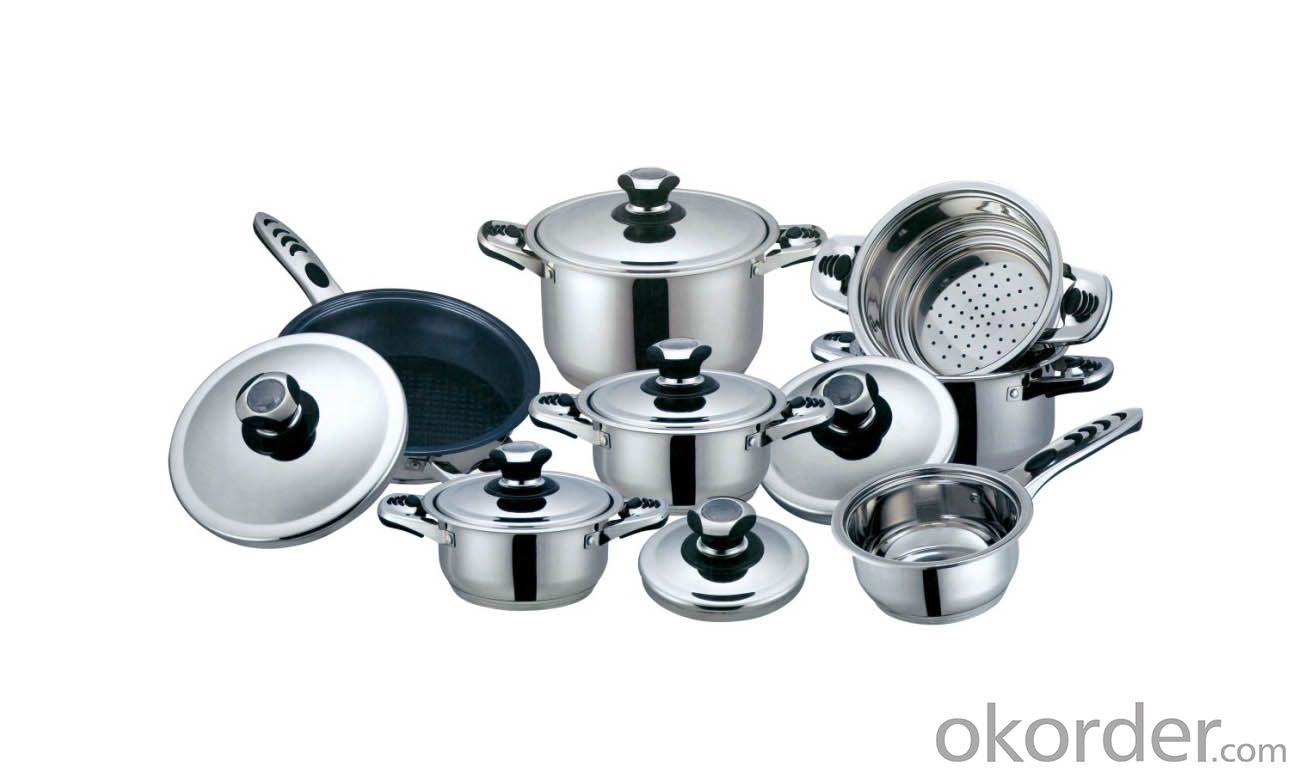
Packaging & Shipping
Packaging: Wooden pallets or iron racks to ensure product integrity during transportation.
Customization: Custom packaging available upon request.
Shipping Methods: Supports sea, air, and land transportation.
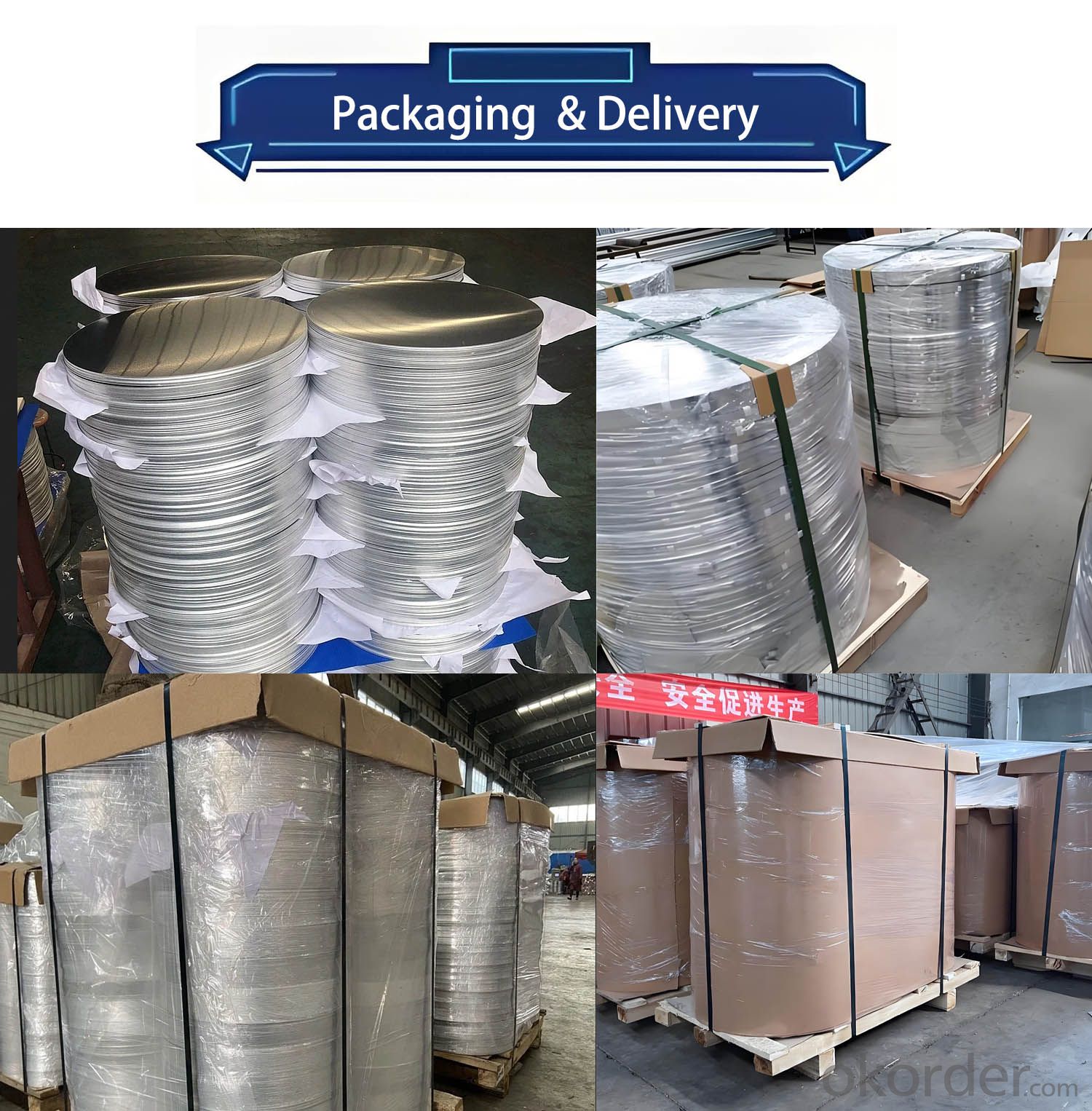
FAQ
Q: What is your minimum order quantity (MOQ)?
A: We support small trial orders; please contact customer service for specific MOQ details.
Q: Can you provide samples?
A: Yes, we offer free samples, but customers need to bear the shipping costs.
Q: What is your delivery time?
A: The standard lead time is 15-20 days, depending on the order quantity.
Q: Do your products comply with environmental standards?
A: Yes, our products meet international environmental standards, and relevant test reports can be provided.
Q: Is aluminum cookware harmful to the human body?
A: Under normal usage conditions, aluminum cookware is safe. However, it is recommended to avoid prolonged storage of acidic or alkaline foods in aluminum cookware.
- Q: This question asks for recent applications of aluminum in the construction industry.
- <p>Aluminum has found new uses in construction due to its lightweight, durability, and sustainability. It's used in curtain walls, window frames, and doors for its strength and resistance to corrosion. Aluminum is also utilized in modular construction, where prefabricated components can be quickly assembled on-site. Its high thermal conductivity makes it suitable for energy-efficient building envelopes. Additionally, aluminum's recyclability and low environmental impact make it a popular choice for green buildings. New technologies have also enabled the use of aluminum in 3D-printed structures, offering innovative design possibilities.</p>
- Q: This question asks about the energy consumption involved in the manufacturing process of an aluminum can.
- <p>The energy required to process and produce an aluminum can varies based on factors like production scale and technology used. On average, it takes about 70-90 kilowatt-hours (kWh) of energy to produce a single aluminum can. This includes the energy for mining bauxite, refining it into alumina, smelting it into aluminum, and finally, manufacturing the can. The energy consumption is significantly lower compared to producing cans from other materials like steel or plastic, which makes aluminum cans more energy-efficient.</p>
- Q: Is it possible to repurpose or reuse old aluminum foil for various uses?
- <p>Yes, old aluminum foil can be repurposed for various uses. It can be recycled, used as a makeshift scrubber for cleaning, or as a reflector for grilling. You can also use it to cover food for storage or as a barrier in gardening to deter pests. However, it's important not to reuse foil that has held acidic or sugary foods, as it can corrode and release aluminum into the food. Always ensure the foil is clean and in good condition before repurposing.</p>
- Q: Is aluminum a suitable material for use in electronic equipment?
- <p>Yes, aluminum is widely used in electronic equipment due to its excellent electrical conductivity, lightweight nature, and high thermal conductivity. It is commonly used in heat sinks, cases, and connectors. However, it is not as conductive as copper, so it is often used in applications where its other properties are more critical. Additionally, aluminum's corrosion resistance makes it a durable choice for various electronic components.</p>
- Q: Is it possible to recycle aluminum and what are the benefits of doing so?
- <p>Yes, aluminum can be recycled, and it is one of the most recycled materials in the world. Recycling aluminum saves up to 95% of the energy needed to produce new aluminum from raw materials. It also reduces greenhouse gas emissions and conserves natural resources. Recycled aluminum can be used in various applications, from beverage cans to construction materials, making it an environmentally friendly and economical choice.</p>
- Q: Explain the natural relationship between aluminum and magnesium, focusing on their abundance and reactivity in the Earth's crust.
- <p>Aluminum and magnesium are both abundant elements in the Earth's crust, with aluminum being the most abundant metal and magnesium being the eighth most abundant element overall. They are often found in close association within the same minerals, such as in aluminosilicates and some carbonates. Both elements are highly reactive, forming compounds readily with oxygen to create oxides and silicates. However, they differ in their reactivity with water; aluminum forms a protective oxide layer that prevents further reaction, while magnesium reacts more readily with water to form magnesium hydroxide. This difference in reactivity influences their distribution and the types of compounds they form in nature.</p>
- Q: Explain how the inclusion of copper in aluminum alloys influences their strength and ductility.
- <p>Adding copper to aluminum alloys significantly increases their strength, particularly in the form of tensile and yield strength. Copper acts as a hardening agent, creating a more rigid structure within the alloy. However, this increase in strength often comes at the expense of ductility. As copper content rises, the ductility of the aluminum alloy decreases because copper reduces the alloy's ability to deform under stress without fracturing. The balance between strength and ductility is crucial in alloy design, as higher strength alloys may be less suitable for applications requiring formability and flexibility.</p>
- Q: What are the methods to prevent aluminum from corroding?
- <p>To prevent aluminum from corroding, several methods can be employed. One effective method is anodizing, which involves applying a protective oxide layer on the aluminum surface to enhance its resistance to corrosion. Another approach is using protective coatings such as paints or enamels that act as a barrier against corrosive elements. Additionally, alloying aluminum with other metals can improve its corrosion resistance. Regular cleaning and maintenance, avoiding contact with corrosive substances, and controlling environmental conditions such as humidity can also help in preventing corrosion.</p>
- Q: Is it possible to recycle aluminum from old products to create new ones?
- <p>Yes, aluminum can be recycled to make new products from old ones. Recycling aluminum is a highly efficient process that requires only 5% of the energy needed to produce new aluminum from raw materials. This process is not only environmentally friendly but also economically viable. Recycled aluminum maintains its quality and can be used to create a wide range of new products, from cans and packaging to automotive parts and construction materials.</p>
- Q: What are the various applications of aluminum in the construction industry?
- <p>Aluminum is widely used in construction due to its lightweight, durability, and resistance to corrosion. It is utilized in the manufacturing of window frames, doors, roofing, and facades for its strength and low maintenance requirements. Aluminum is also used in structural components such as beams and columns, and in the construction of bridges and high-rise buildings. Its malleability allows for easy shaping and forming, making it ideal for intricate designs. Additionally, aluminum's thermal conductivity and reflectivity make it suitable for energy-efficient construction.</p>
Send your message to us
Thickness 2mm-6mm 1050 1060 H12 H14 Aluminum Circles/Discs for Cookware Production
- Loading Port:
- Qingdao
- Payment Terms:
- TT OR LC
- Min Order Qty:
- 1 T
- Supply Capability:
- 2000 T/month
OKorder Service Pledge
OKorder Financial Service
Similar products
Hot products
